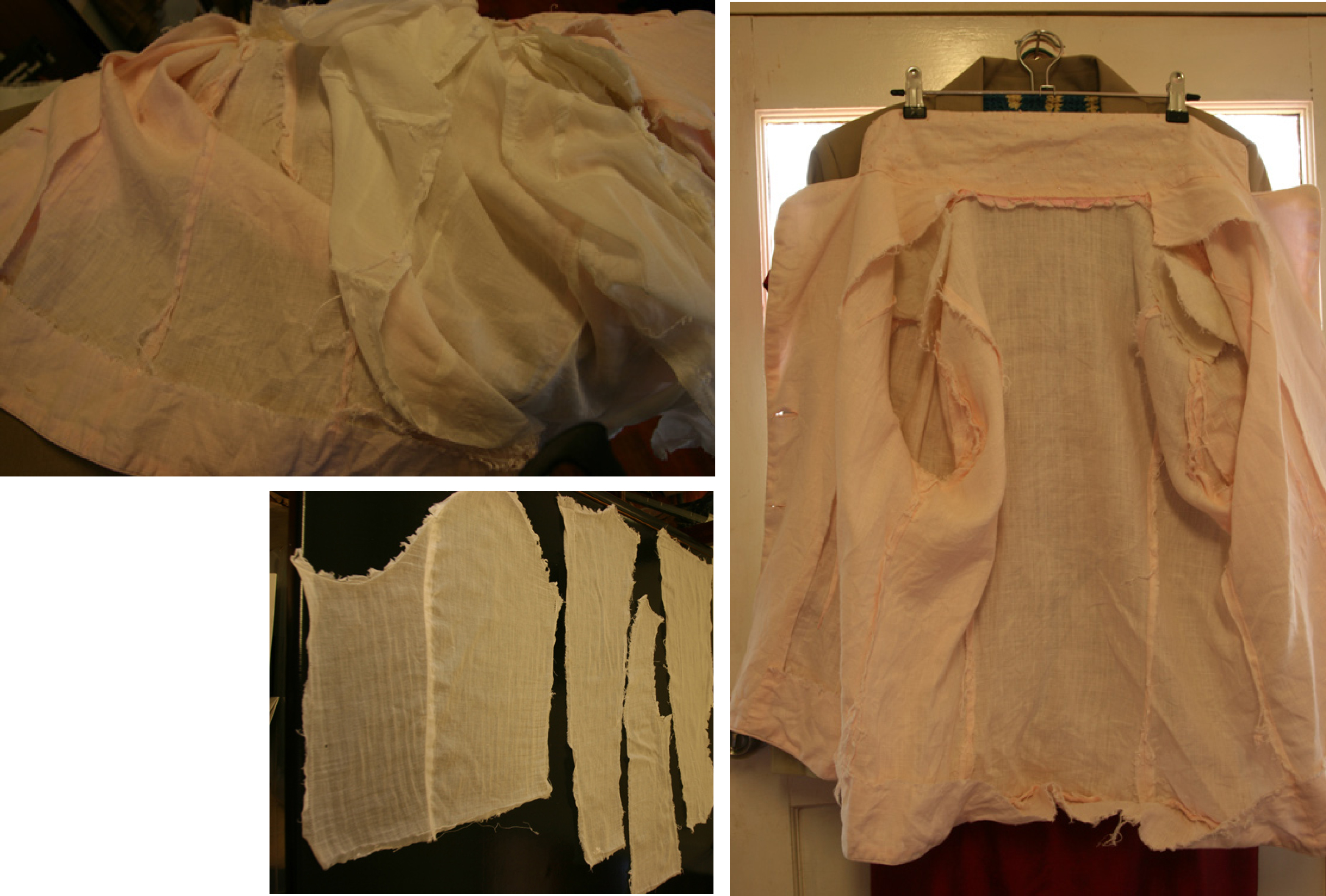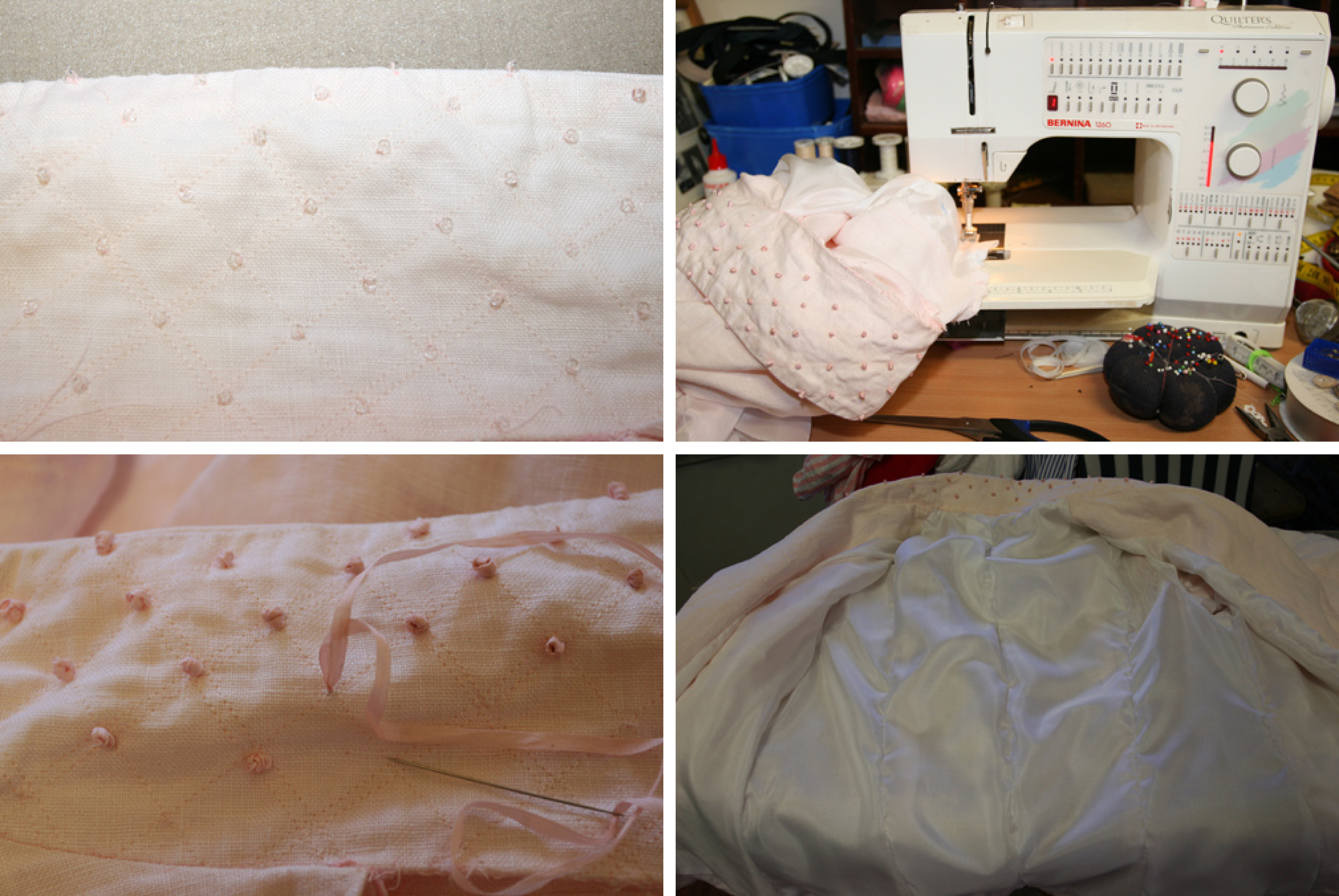Classic elegance is never out of fashion and Annabelle Brayley loves the idea of well-constructed clothes made out of natural fibres that last and last. In reality though, she is rarely out of jeans and polo shirts (which she doesn’t make) living in outback Queensland and writing books like Nurses of the Outback, Outback Vets and her new one, Our Vietnam Nurses, to be published by Penguin in May.
Outback storyteller and author Annabelle makes or remakes most of her own ‘good clothes’ and for The Slow Clothing Project, she has chosen to renovate a linen jacket she made 15 years ago because she doesn’t like throwing things out, especially beautiful old clothes that have life in them yet. “It’s so easy to repair and/or remodel well-made clothes and most vintage garments are made out of beautiful, good quality, natural-fibre fabric. I love seeing them rejuvenated and given a new lease of life. I love that saying, ‘In a world of Kardashians, be Audrey’,” she said.
“I don’t believe in wearing or using anything (clothing or otherwise) a couple of times and then chucking it out. We live in a world of ‘fast’ everything and clearly it’s done us no favours. Nothing is commercially built to last so we not only have the expense of replacing things, we are cluttering up the Earth with cheap junk. We’re constantly harassed by advertising that tells us what we want/need/should have to make us more fulfilled/better looking/better people/whatever … yet I simply believe we need to slow down, reconnect, appreciate and feed the good in all of us.”
Annabelle and husband Ian are both creators and builders who live in a converted red American-style barn at Morven in south-west Queensland. “We use things up or wear them out. We live amongst recycled furniture much of it beautiful old family pieces with a story to tell. We’re busy, hard-working people and we both have occasion to be away from home working, so part of our ‘slow’ is just appreciating being here at the same time even if he’s busy in his shed and I’m in my hut writing or, less often these days, sewing.“
“Whether we like it or not, the world is now a fast-paced, data-driven global community. So many of us communicate now via cyber and it can be isolating. Finding balance isn’t always easy but using the principles of ’handmade’ helps. Cooking is the essence of handmade and taking time to cook from scratch is a great way to ‘slow’ a little every day. It’s easy for those of us who live in rural and remote Australia because we rarely have the option of fast food. Food prep is another job but that doesn’t mean it can’t be enjoyable and the satisfaction derived from providing a meal is huge if you just take the time to think about it; it connects us with our families and each other.“
She said anything handmade is cost-effective, sustainable and rewarding; all great for wellbeing. And, when it comes to clothes, it’s an excellent opportunity to let your ‘individuality’ shine! Growing up it never occurred to Annabelle not to sew because her mother made most of the clothes for herself and four brothers when they were little and even made all Annabelle’s summer uniforms when she went to boarding school.
“I don’t think I ever thought about there being any other way to get clothes until I went away to school in Brisbane. Like most of their generation, both of my grandmothers sewed. The thing that really fascinated me was the fact that my maternal grandfather could also sew, and did. In turn, Mum taught me the basics and then let me loose on her sewing machine, initially an old singer treadle machine and then her new electric one when she got one. There were plenty of disasters along the way, but they’re the best outcomes for learning shortcuts because you know what NOT to do next time. And sometimes there are no shortcuts; some things you have to prepare and complete the long way to get a perfect finish.”
“After I married Ian and went to live a very long way from the nearest shops, being able to sew was not only a practical asset; it was an entertainment. I made curtains and cushions and bedspreads and taught myself to make slip covers for chairs. I love beautiful natural fibres and rarely use any synthetics and then only when they’re blended into a natural fibre. When our son and daughter were small I made quite a lot of their clothes.
“In 1987, a young friend whose family lived about 100 kilometres from us asked me if I would make her wedding dress. Jane had an idea in her head and between us we translated it into reality. It was very satisfying to see her looking so beautiful as she walked down the aisle to her waiting groom. Since then, I’ve made quite a few wedding dresses for ‘outback’ brides including a few who’d moved to the city to live. The time spent on each particular journey is a very special opportunity to share stories and reconnect generations of women. Some of ‘my’ brides have worn remodelled frocks their mothers wore, while others started afresh. The challenge always is to create a garment that fits perfectly, compliments the bride and reflects her particular personality and style.”
Meanwhile, The Slow Clothing Project presented an opportunity for Annabelle to revive a pale pink linen jacket she originally made 15 years ago. “I always loved wearing this jacket because the colour suits me, the style is flattering and I can wear it with pants. I originally beaded the collar so that I could dress it up or down. Even though we now live a less geographically isolated existence, it’s still 400 kilometres to the dry cleaners so I make sure I can wash everything I wear. Fifteen years of wash and wear on this jacket wore out the lining, obliterated some of the beads and something left a dirty brown mark on one shoulder. “
“I began by rubbing the stain with Exit stain remover and carefully hand-washed the mark away. I then removed the old cotton voile lining I’d originally used to ensure coolness and unpicked all the lining pieces to use as a pattern for the new lining (silk this time). While the lining was out, I trimmed all the ragged seam edges and re-stitched some that were threatening to part. I cut off all the beading, unpicked the collar at the neck and, using silk ribbon, embroidered roses where the beads had been. Once that was complete, I made the new lining and reconstructed the whole thing. I’m so delighted with the result and look forward to wearing it several more times.”
And what advice does she have for people starting to sew and make more of their own clothing? “Three things. One: There are sewing courses around to teach you the basics if you need it then go to second hand shops and buy pre-loved fabric to practise on. Practice makes perfect as they say so get in and have a go. Two: Watch This Old Thing (on iView until Feb 27) it’ll give you some great ideas. Three: have a look at the clothes in second-hand shops and buy a couple that appeal to you that might have potential for change and, again, have a go! Chop the sleeves off, cut the neck down, take a skirt off one and add it to another … whatever takes your fancy. You’ll learn as you go along.“
Thanks for sharing Annabelle and we look forward to the next book!


